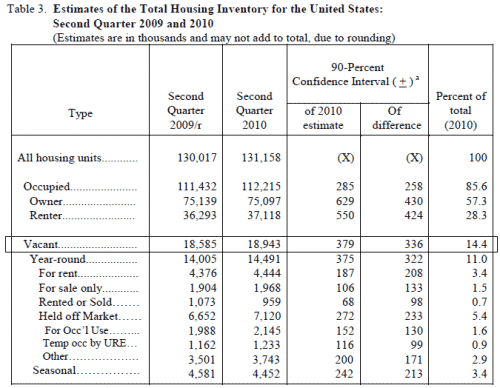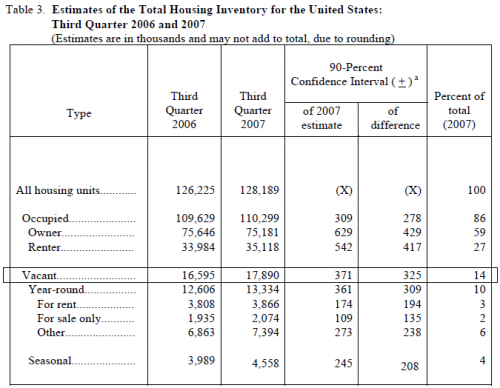Housing Shortage Coming
By John Lounsbury.
Really? Yes, that is exactly what some economists are saying. According to Lisa Swerzer for SmartMoney, in an article at MSN Money, this view is held by severa; presumably impartial people. The people making such predictions do not appear to be shills for the NAR (National Association of Realtors) or the NAHB (National Association of Home Builders). They come from such places as MIT (Massachusetts Institute of Technology) and the Milken Institute.
From the Swerzer article:
In the past seven years, housing starts first exceeded — but then fell short of — the historical norm of 1.6 million, according to the National Association of Realtors, with a deficit expected to grow into 2011. The chief economist of the Realtors group said last month that the big drop in home construction suggests a shortage could become an issue later.
Longer-term demographics support this theory, says Ross DeVol, the executive director of economic research at the Milken Institute, an independent think tank in Santa Monica, Calif. The U.S. is adding only about 600,000 housing units a year now, and the long-term growth in new households is 1.3 million to 1.4 million per year, DeVol says.
Swerzer points out that there is a significant inventory overhang for housing from a large number of foreclosures still to come. She mentions 3 million foreclosure filings in 2010 alone. It should be clarified that this is not the number of homes involved because many foreclosure processes involve at least two filings and some involve three: initial default notice, auction notice and eviction notice (if necessary). The legal procedures vary from state to state and in some states foreclosures can be completed, under certain conditions, with only one foreclosure filing. For details and state to state variations, see ForeclosureProcess.org.
For the purpose of this discussion, we will make the approximation that the number of foreclosure filings is double the number of properties involved. Using Swerzer’s 3 million filings, that would give 1.5 million properties in the foreclosure process for 2010. I have been following the development of the foreclosure story for some time (see here and here). The best current estimates that I have are for between 5 and 7 million additional properties to be foreclosed. If we pick the middle of the range (6 million) and divide uniformly that into the four years 2010-2013, that is 1.5 million foreclosures per year.
The second factor that will come into our calculation is the number of homes that are destroyed each year. Homes are destroyed by such processes as fire, wind or flood damage and simple decay and abandonment. (Yes, homes do wear out.) Using the numbers that Swerzer quotes, this is estimated to be 300,000 per year. That is 1.6 million average new housing units per year minus 1.3 million new household formations, on average.
The number of vacant residential units also represents a potential supply. The U.S. Census Bureau provides estimates of vacancies on a regular basis. The table below, for second quarter 2010 shows the latest data. A box has been added to draw your attention to the vacancy data.
The current vacancy number can be compared to the third quarter of 2006, shown below, which we will use as a base line for a reference vacancy rate.
The difference between the total vacancies in 2Q/2010 and 3Q/2006 will be considered potential available housing inventory.
We can now calculate the trajectory of supply and demand for housing units.


‘”The biggest problem seems to be an inadequate supply of housing, which makes it impossible to have a housing bubble,” says economist Ross DeVol, director of regional studies at California’s Milken Institute. ‘ That’s from 2002 (https://www.sptimes.com/2002/06/09/Columns/Housing_prices_could_.shtml)
Or, how about this:
”’Details of one of the so-called VIP loans made by Countrywide Financial Corp. for “friends of Angelo” show how Chief Executive Angelo R. Mozilo personally saw to it that prominent borrowers enjoyed very attractive rates and a glitch-free mortgage process. … Several former employees described one such mortgage made to Ross C. DeVol, director of regional economics at the Milken Institute, a Santa Monica think tank. … the mortgage caused an uproar at Full Spectrum because the branch that originated it had its profit docked on the grounds that the mortgage was so favorable to DeVol, the ex-employee said.”’
https://articles.latimes.com/2008/jul/01/business/fi-moziloside1
This will be a great comfort to my next door neighbor, who has dropped his asking price 4 times without a single walk-through.
We are 1% over the long term average vacancy rate of 1.5%. This will take years to burn off. And, we are 3% over the long term average on vacancy of rental units. Same time delay. There are lots of empty places to live, and lots of dark supply.
Agreed, David. There are plenty of vacant places available As John suggests, the concept that there is an impending supply crunch seems far-fetched. I’d like to see the numbers he puts together on the back of this.
“Homes are destroyed by such processes as fire, wind or flood damage and simple decay and abandonment. ”
The above statement does not pass the smell test
John is making a true statement. If you read what he is saying, he is actually taking a sceptical view of the assertion that there is an impending housing shortage – especially given the number of potential foreclosures in the queue. However, he has not only suggested cutting the foreclosure estimate by a factor of two, but he has also suggested subtracting from the housing stock to reflect destroyed homes.
As John indicated, homes do wear out and are destroyed. In Detroit, this is happening right now. See the video here:
https://pro.creditwritedowns.com/2010/06/ghost-town-detroit.html
“As John indicated, homes do wear out and are destroyed. In Detroit, this is happening right now.”
You can keep just about any house up and running for decades, if not centuries. The houses in Detroit didn’t wear out, they were abandoned and left to rot.
Not a very good example.
Your point is purely semantics. Detroit is a particularly good example actually. Of course homes CAN last for hundreds of years if kept up – that is the experience in Europe. However, when homes are abandoned or not maintained because of the debt stress of the owners, they fall into disrepair and often destroying that inventory makes sense. My understanding is that this is what John is referring to in addition to catastrophe damage when he says ” Homes are destroyed by such processes as fire, wind or flood damage and simple decay and abandonment.”